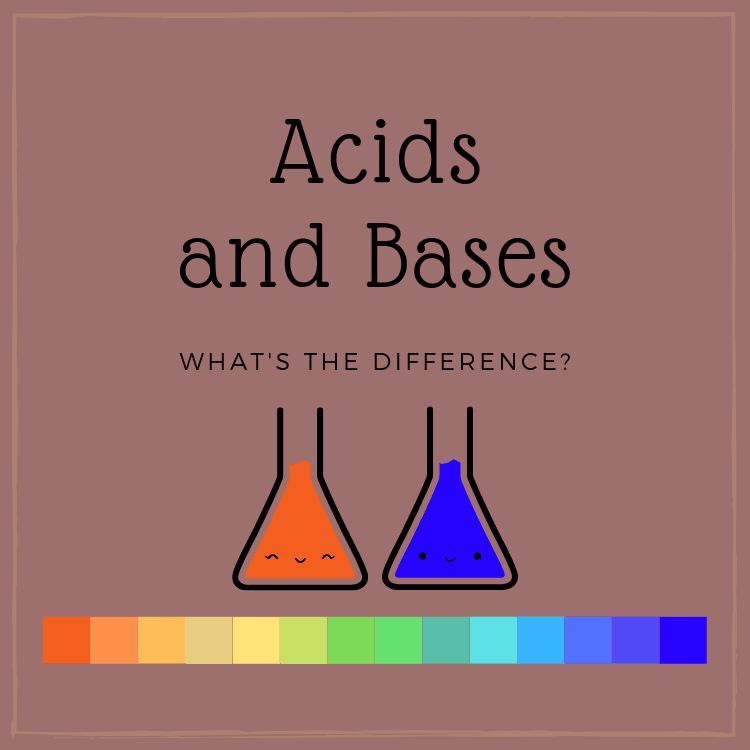
Acids and Bases: What’s the Difference?
August 1, 2019 - Emily Newton
Revolutionized is reader-supported. When you buy through links on our site, we may earn an affiliate commission. Learn more here.
Whether you’re a student, science enthusiast or lifelong learner, the question may have popped into your head — what’s the difference between acids and bases? Indeed, most liquids fall under one of these two categories. And, as it turns out, there are a few different ways to classify these groups of liquids. Read on to learn more about the difference between acids and bases and how to classify each.
How Can We Classify Acids and Bases?
Over the years, scientists have come up with multiple ways to differentiate acids from bases. Svante Arrhenius developed his eponymous theory of acids in 1884, noticing something simple about both types of liquids — acids contain hydrogen ions, while bases contain hydroxide ions.
Johannes Nicolaus Brønsted then built upon on this by finding that not all bases have to be hydroxides. Rather, acids stand as proton donors, while bases accept protons. The Gilbert Newton Lewis theory looked at acids and bases in the vaguest way of all.
It states that acids accept electron pairs, while bases donate such electrons. Obviously, you can’t see these qualities with the naked eye. So, how can we tell that a liquid contains the ions that would make it an acid or a base?
The pH Scale
Multiple methods exist for testing a particular liquid’s pH levels. In a pinch, you can use red cabbage juice — it contains flavin, which changes color with exposure to acids and bases. Perhaps easiest of all, though, is a pH strip, which you can simply dip into any substance and observe as it changes color.
The strips come with a color chart, which you can put side-by-side with your test strip to compare. On the lower end of the scale, numbers 0 through 7 represent acids. On the other end, 7 through 14 are bases. Anything with a pH of 7 stands as a neutral liquid — that is, a composition that’s neither an acid nor a base. An acid that clocks in as a one on the pH scale can be strong and dangerous. The same, of course, goes for very strong bases, too.
Chemists often use substances on either end of the scale for experiments, as they produce notable reactions. However, you should exercise caution in handling anything highly acidic or basic without an expert’s supervision. To that end, you might want to consider some of the common liquids that you’ll find on either side of the pH’s neutral rating of 7.
On the far side of the acidic scale, gastric acid rates as a 1. Orange juice ranks as a 3, while black coffee is a 5. Then, you have your bases — at 13, you’ll find bleach, just two ticks away from ammonia, which is an 11. Closer to neutral, baking soda ranks as a 9, and seawater equals about an 8 on the pH scale.
What Are the Other Qualities of Acids and Bases?
Perhaps you don’t have a pH testing kit available, but you’d still like to figure out if you have an acid or base on your hands. It’s worth reiterating that such testing can be dangerous, as some solutions do affect our skin and hair — even something as seemingly harmless as hard water can do this.
So, be careful as you proceed to examine the liquid in question. In terms of acids, they have a slew of common qualities. For starters, they can be corrosive and cause damage to your skin. They also have a strong flavor, although you shouldn’t sample anything mysterious.
Household acids, such as lemons or vinegar, exemplify the pucker-inducing taste of an acid, if you feel inclined to try one. They can feel drying, too. A strong base can burn your skin, so be wary of testing them on your own, too. Beyond that, bases tend to have a soapy feel to them, as compared to acids. They have a bitterer flavor than acids, too — try taste-testing a bit of baking soda dissolved into water to examine this in action.
Why Is This Important Information to Know?
Acids and bases occur everywhere, not just in a chemistry lab. Your own body has its own perfect balance of acids and bases — a neutral pH keeps us in top form. The blood, kidney and lungs work to neutralize any strong acids or bases to maintain bodily balance.
For example, carbon dioxide is an acid — as defined by Lewis — that your body reacts to. After exposure, your breathing will slow down because your body is trying to boost bodily pH to counteract the acid. On the other hand, if your pH is too high, you’ll start breathing heavily to get your body back to neutral. Exercise and digestion also create acids, but your body is typically ready to offset these substances on its own.
Of course, all knowledge is good knowledge — it’s not just about understanding the body or knowing how to conduct an experiment. You might have just been curious about the differences between acids and bases, and hopefully, now you have some answers!
Revolutionized is reader-supported. When you buy through links on our site, we may earn an affiliate commission. Learn more here.
Author
Emily Newton
Emily Newton is a technology and industrial journalist and the Editor in Chief of Revolutionized. She manages the sites publishing schedule, SEO optimization and content strategy. Emily enjoys writing and researching articles about how technology is changing every industry. When she isn't working, Emily enjoys playing video games or curling up with a good book.






